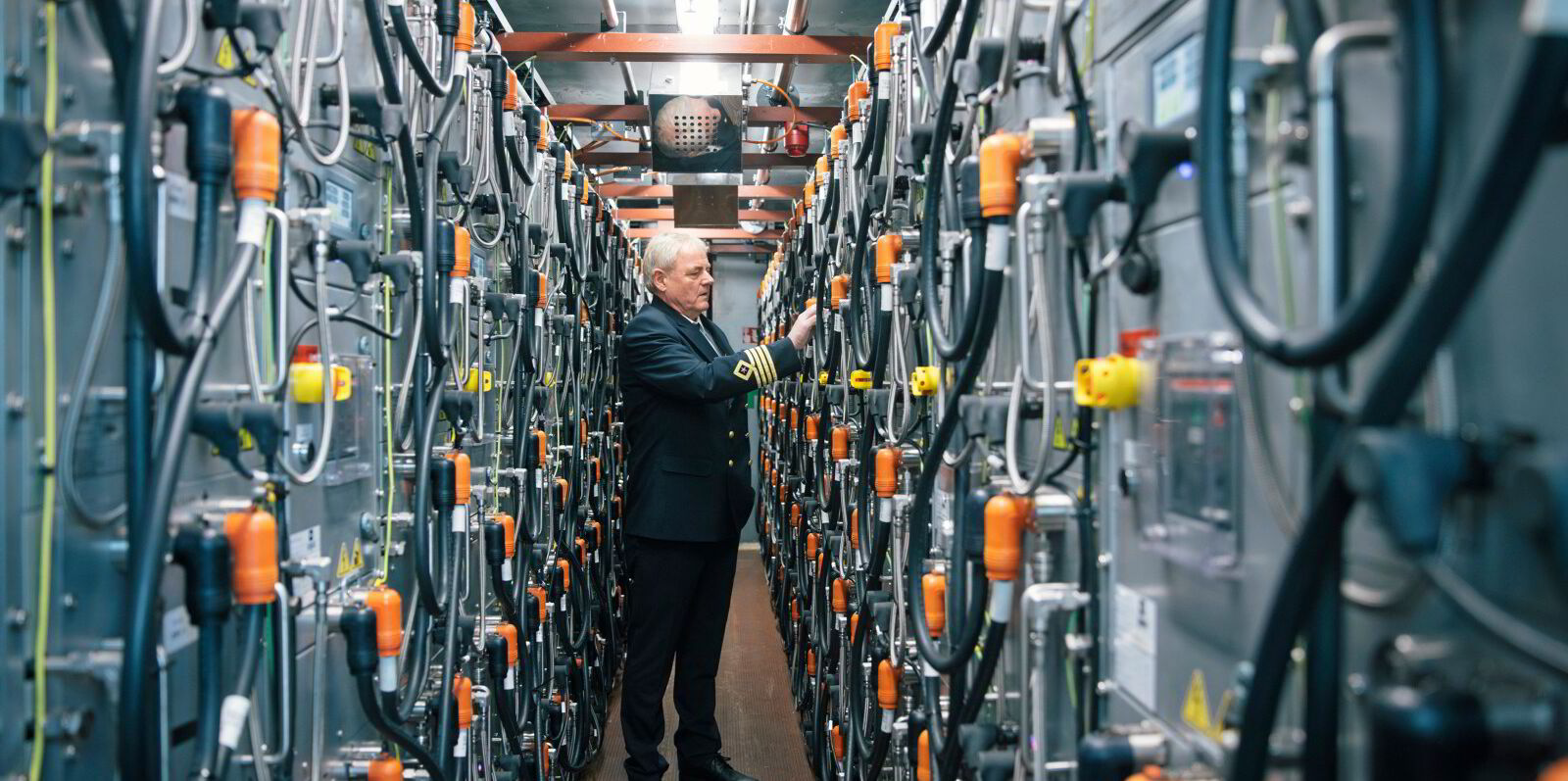Vessel leasing giant Maritime Partners was already a frontline customer for a start-up that developed a technology that turns methanol into hydrogen fuel, with a project to build a towboat that will use the equipment.
Now, the New Orleans company is gearing up to take the hydrogen generators to new marine applications beyond its Hydrogen One vessel, after its recent acquisition of e1 Marine from joint venture partners Ardmore Shipping and Element 1, which remains the licensor of the technology.
Element 1, an Oregon hydrogen technology company, told TradeWinds that as part of the deal, the Maritime Partners-controlled e1 has an expanded licence to bring the generators to new marine applications.

Element 1 chief executive Dave Edlund told TradeWinds the transaction also brings more focus to e1 Marine.
“When you get three different parties together, all equal shareholders, you don’t always get a consistent vision, and now there is a consistent vision to move e1 Marine forward,” he said.
Maritime Partners is a major player in the Jones Act shipping space, with a fleet of 1,900 vessels including tugs, barges and tankers.
Company executives declined to be interviewed for this article without conditions.
But chief executive Bick Brooks said in a statement announcing the e1 Marine takeover that the move represents a milestone in Maritime Partners’ commitment to innovation and environmental responsibility.
“The integration of e1 Marine’s cutting-edge, methanol-to-hydrogen technology with Maritime Partners’ extensive industry expertise promises to revolutionise marine power applications and pave the way for a greener future,” he said.
At sea or on land
The generators sold by e1 Marine use reforming and purification technology to turn methanol into fuel cell-quality, clean-burning hydrogen. The options include mobile onboard generations and containerised units, and applications can be either at-sea or land-based.
Doing so allows vessels to use hydrogen fuel cells but to take advantage of the wider availability and easier logistics of methanol.

While the process does emit some CO2, using green methanol as a carrier of renewable hydrogen can result in a net-zero or even carbon-negative footprint.
Maritime Partners has also achieved milestones in putting the hydrogen generator technology to use, reaching a design basis agreement with the US Coast Guard in May that was a key step towards building the Hydrogen One towboat.
Founding
The three partners created e1 Marine in March 2021 as a way to bring Element 1’s hydrogen reformer technology to maritime applications.
Bart Kelleher, Ardmore’s chief financial officer, said that the product tanker owner continues to hold a $10m stake in Element 1 even though it sold its holding in e1 Marine for $1.65m.

Ardmore pocketed a $500,000 gain from the transaction, he said in a recent conference call with analysts.
“That company needs additional capital to scale and we thought about our own capital allocation policy and felt that it was best to exit,” he said.
Hydrogen generators are not generally seen as a main power solution for oceangoing ships.
But in many sectors of the industry, they can serve as auxiliary generators.
One potential future application of methanol-reforming technology in maritime is to help make ports more environmentally friendly.
Edlund said that the hydrogen generators developed by his company are compact and cheaper than electrolysers — which use electricity and water to produce hydrogen. Electrolysers are the leading way to turn renewable power into zero-emissions green hydrogen, but they are notoriously expensive.
He noted that most hydrogen applications are focused on generating electricity.
Power generation
“So the opportunities and ports largely relate to grid-independent electrical power generation,” he said.
And that means substituting for dirtier diesel generators.
“So anywhere where the grid is insufficient or just not available, what do you do if you need electricity? You run a generator. That’s not really desirable anymore, for a lot of reasons,” Edlund said.
“We offer a clean alternative to that.”
He explained that the hydrogen supply chain has other disadvantages, including the high cost of buying the fuel.
Regulations in many places also require large buffers around hydrogen storage.
“There’s just a lot of drawbacks to buying hydrogen, which is often what we compete with,” he said.
“When a company approaches Element 1, it’s usually because they have looked at buying hydrogen and have concluded that either they can’t get it or they can’t get it reliably — or they can get it, but it just costs too much.”
Read more
- Shipowners missing out on benefits of trading Europe’s ETS allowances
- Letter: Shipping needs to see the big green picture
- Momentum for natural gas-powered ships puts bio-LNG in focus
- Uniper eyes deal to ship hydrogen from Norway on new Provaris carriers
- Living like it’s 2017: Dorian LPG explains why an $84m shares sale made sense



